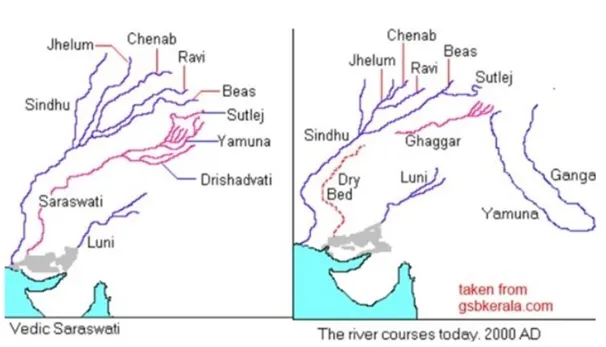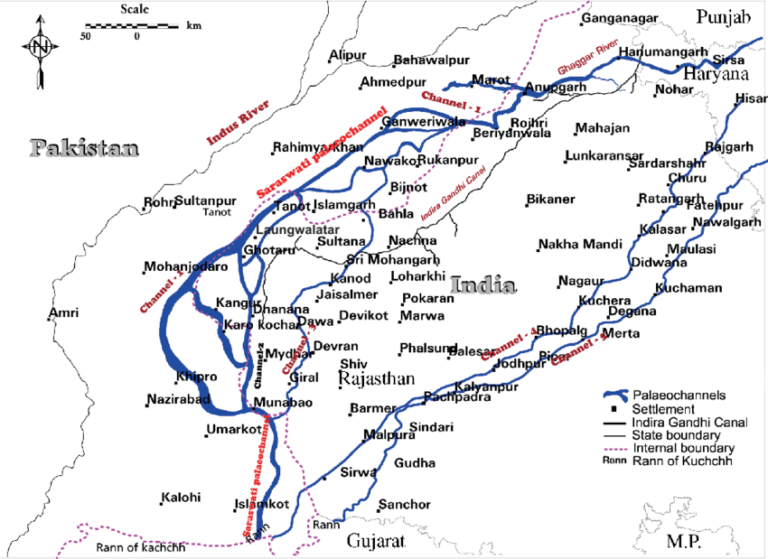Firstly, I reproduce below what ChatGPT conveys about the Aryan Invasion Theory.
The Aryan Invasion Theory, also known as the Aryan Migration Theory or Indo-Aryan Migration Theory, is a historical hypothesis that was proposed in the 19th century to explain the origins of the Indo-Aryan people in the Indian subcontinent. This theory suggests that a group of Indo-European people known as the Aryans migrated into the Indian subcontinent from the northwest, bringing with them their language and culture.
Key points related to the Aryan Invasion Theory include:
- Migration: According to the theory, the Aryans migrated into the Indian subcontinent in several waves around 1500 BCE. They are believed to have come from the steppes of Central Asia, possibly modern-day Ukraine and Kazakhstan.
- Vedic Culture: The arrival of the Aryans is associated with the composition of the ancient Indian religious texts known as the Vedas. The Indo-Aryan language they spoke is believed to have evolved into Sanskrit, which became the language of the Vedas.
- Cultural Influence: The Aryans are said to have played a significant role in shaping the culture and religion of the Indian subcontinent, contributing to the development of Hinduism. They are also associated with the caste system, which is described in ancient Indian texts.
- Archaeological and Linguistic Evidence: Proponents of the theory have cited linguistic and archaeological evidence to support their claims. Linguistic connections between Sanskrit and other Indo-European languages have been noted, and some archaeological findings have been interpreted as consistent with the migration of Indo-European people into the Indian subcontinent.
However, it’s important to note that the Aryan Invasion Theory has been the subject of debate and controversy. Some scholars and researchers have challenged the theory on various grounds, including:
- Lack of Concrete Archaeological Evidence: Critics argue that there is limited archaeological evidence to conclusively prove the theory of a large-scale Aryan migration or invasion. The evidence is often considered circumstantial and open to multiple interpretations.
- Alternative Theories: Some alternative theories propose that the Indo-Aryan people may have originated within the Indian subcontinent itself rather than migrating from outside.
- Political and Nationalistic Considerations: The Aryan Invasion Theory has been a politically sensitive issue in India, with some groups contesting it due to concerns about its implications for the country’s history and identity.
In recent years, the theory has been largely reevaluated and modified by many scholars. It is increasingly viewed as a complex process of interaction and cultural exchange rather than a simple invasion or migration. As a result, the term “Aryan Migration Theory” is sometimes used to reflect the idea of a more gradual and nuanced movement of people and ideas into the Indian subcontinent.
So in essence, both sides of the Aryan Invasion Theory has been put forward. We will now look at what are the views of some of the Indian Experts.
VIEWS OF THE INDIAN EXPERTS:
Based on the views of Indian Geneticists, Genealogists, Geologists, Archaeologists, Historians, etc. we will look at two aspects: 1) The Indus-Saraswati Civilization 2) Genetics of the Indian population.
Saraswati & Indus Rivers:
Saraswati – The Cradle River:
- Initially, it was the Aryan Invasion Theory (AIT) invented by Max Muller & Mortimer Wheeler (more so the latter) which said that the Indo-Aryans invaded and conquered India and then taught Indians Sanskrit language, Vedas, Itihasa, Puranas Later, when no local evidence was found that an invasion (war) actually happened, it was termed as a “migration” and the Indo-Aryan Migration Theory (IAMT) was floated.
- The Cradle River of the Indian Civilization was considered to be the Indus River (also known as Sindhu River where its inhabitants came to be called Hindus) and not the Saraswati. The Saraswati, the western historians felt was a mythical river.
- However, the Remote Sensing Satellite Imagery by ISRO, shows that a dried out river bed of a once mighty river that flowed from Himalayas to the sea via Southern Punjab & Haryana, Rajasthan, Bhawalpur in Pakistan, further down to Sindh and merged into the sea at Rann of Kutch. (A report published by ISRO is provided in the next section below Ref: Space India Publication dated 2002). The Ghaggar- Hakra channel is now claimed to be the remains of the legendary Saraswati River with Indus as the parallel river to the East of it.
- Saraswati was in full flow some 6000 years ago. The Nadi Sukta of Rig Veda (10th Mandala, 75th Sukta) mentions Sarasvati as a mighty river, greatest of all Rivers & Goddesses, a raging torrent, the primary stream amongst the Sapta Sindhva (Seven Rivers of India). Thus, it is evident that Saraswati was a very ancient river. It was fed by both Yamuna & Satluj that made it a formidable river which was 4600 kms long and 6-8 kms in width. It was fed by both the monsoons & the glacier melt and hence it was a perennial river.
Around 1900 BCE, it dried out completely due to tectonic shifts. The fact is that over 60% of the Indus valley sites have been found not along the Indus river tract, but on the dried out course of Saraswati River. Subsequently, when the first tectonic plate shift happened around 4700-3700 BP (before present), the river Yamuna shifted eastwards and joined Ganga at Prayagraj (Allahabad). Saraswati thus lost a significant source of ice melt waters.
Satluj then turned westwards after a second tectonic shift which happened in 2,700 BP (before present) & joined the Beas River which further connects to the Indus River (Some reports say the change in course happened in 1800 BC or even much before). This deprived the Saraswati of the remaining glacier waters causing the sad demise of the once mighty Saraswati River.
Indus River:
- Indus Valley Civilization: Furthermore, Indian monsoon began to weaken about 4,350 years ago by a 900 year drought taking a toll on the Indus River. A study revealed that from 2,350 BC till 1,450 BC, monsoon had weakened drastically where this civilization had once flourished. The residents thus gradually moved out both towards the East & West. The largest cities in this area were Mohenjo-daro & Harappa which eventually were abandoned. Saraswati once flowed close to the Indus River, hence it would appropriate to call it the Indus-Saraswati Civilization or Harappan Civilization. Here it is worth noting that the people who lived here had developed their own script known as “The Indus Script”, which has not been deciphered yet! The Harappan script disappeared altogether.
- IIT Kharagpur & Archaeological Survey of India (ASI) have uncovered evidence that that Indus Valley Civilization (IVS) is 8,000 years old, and not 5,500 years old as envisaged earlier and therefore far older than the Egyptian (7000 BC to 3000 BC) and Mesopotamian (6500 BC to 3100 BC) civilizations. What’s more, the researchers have found evidence of a pre-Harappan civilization that existed for at least 1,000 years before this. The other older sites are located in Bhirrana, Rakhigarhi, Lothal (Ancient Port City of India – see a You Tube video at the end of this blog regarding redevelopment of this port) , Dholavira & Kalibangan. Using a technique called “Optically Stimulated Luminescence” pottery shards from Bhirrana were dated to 6000 years ago. This proves that a population already existed in these areas much before the arrival of Aryans.
Powered By EmbedPress
Conclusions:
- The Aryan Invasion Theory claims that the migrations happened in waves around 1500BC. As we can see from the above, people were already leaving the area due to extreme drought and the rivers were drying up. Why would people migrate to such a region? No great civilizations would build great cities in an area if there is no water source nearby.
- Secondly, if indeed the Sanskrit language, Vedas & other scriptures were given to the Indians by the Europeans, how is it that the teachers themselves forgot about these scriptures? There should be traces of a population that still remembers these scriptures & language in Europe.
- Thirdly, when there is an invasion, people would bring artifacts pertaining to their culture with them. No traces of these have been found in this region.
- If migrations can happen from West to East, it can also happen from East to West. Why only in one direction?
The next blog will look at Aryan Invasion Theory & Indian Genetics and this will be a continuation of this blog.
National Maritime Museum Complex (< You Tube video here) is now being developed in the 4500 year old ancient port city & world’s first known Dry dock located in Lothal, Gujarat(<click here to know more) & also one of India’s oldest port cities. This port was well known for its trade with the Mesopotamian Civilization.

